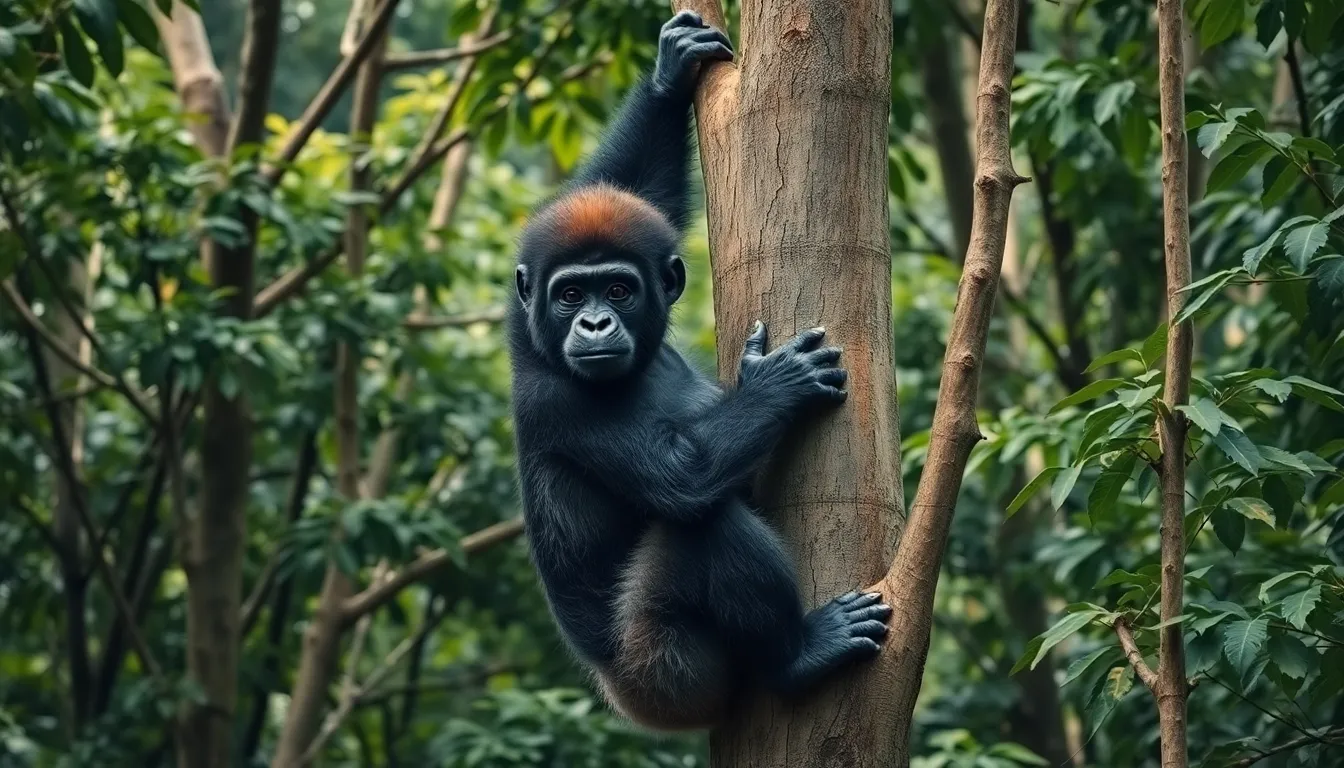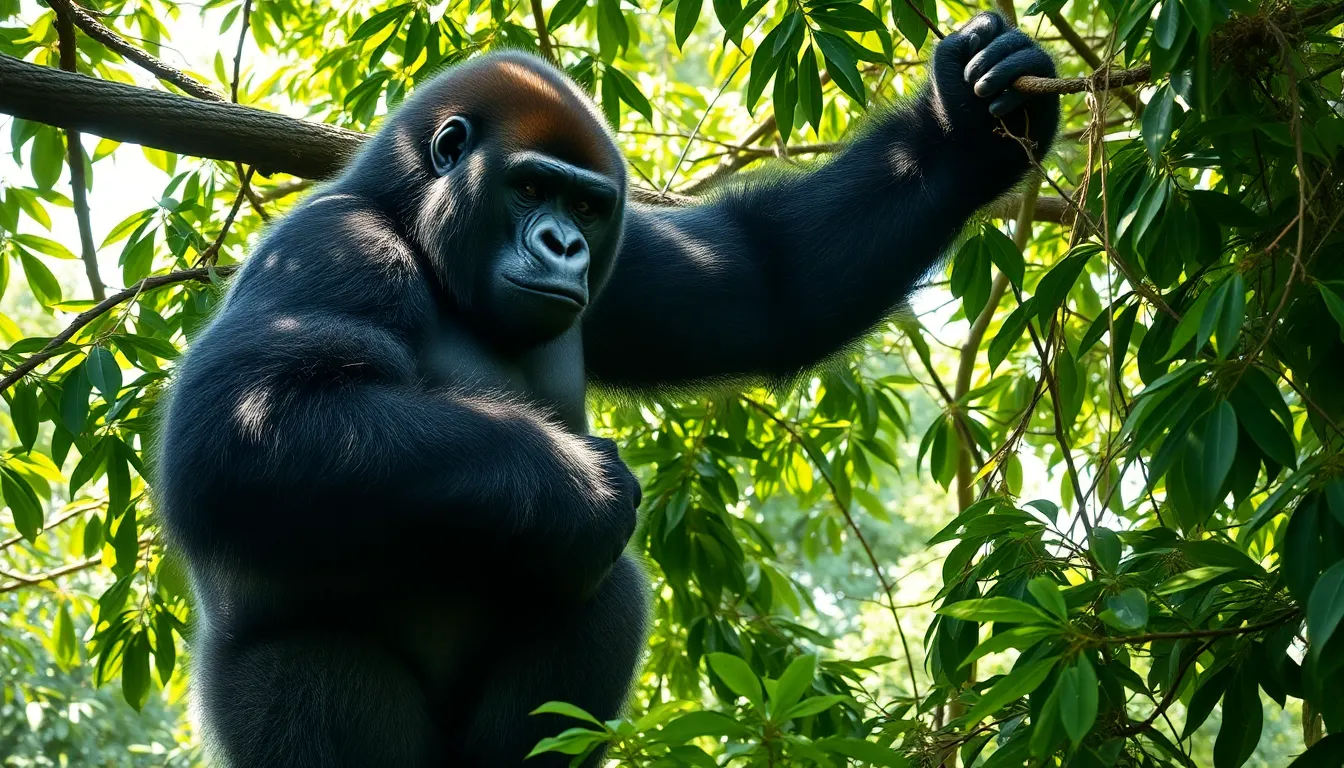When it comes to stamina, gorillas are the unsung athletes of the animal kingdom. Imagine a powerhouse of muscle and might, capable of swinging through the trees and charging across the forest floor with ease. But just how much endurance does this gentle giant really possess? Spoiler alert: it’s impressive.
Table of Contents
ToggleUnderstanding Gorilla Physiology
Gorillas exhibit unique physiological traits that contribute to their remarkable stamina and physical performance. Their muscle structure and energy sources play key roles in how they thrive in their natural environment.
Muscle Structure and Endurance
Gorillas possess dense muscle fibers, particularly the slow-twitch type that supports sustained activity. Such fibers enable gorillas to maintain strength and endurance during prolonged physical exertion. Additionally, their muscle mass provides exceptional power, allowing for quick bursts of speed when necessary. Comparative studies show that gorilla muscle density is significantly higher than that of many other mammals, contributing to greater overall endurance. This anatomical advantage equips them for climbing and maneuvering through their forest habitat effectively.
Energy Sources in Gorillas
Gorillas draw energy primarily from a herbivorous diet rich in leaves, stems, and fruits. Plant matter supplies necessary carbohydrates and nutrients, fueling their physical activities. Gorillas also exhibit a low metabolic rate, which aids in conserving energy throughout their day-to-day activities. Studies indicate that their digestive systems are highly efficient, maximizing the extraction of calories from plant material. This energy-efficient design allows gorillas to sustain their stamina for hours while foraging or interacting socially within their groups.
Factors Affecting Stamina

Various elements contribute to the stamina of gorillas. Understanding these factors helps in comprehending their endurance levels.
Age and Health
Age plays a significant role in a gorilla’s stamina. Young gorillas typically exhibit higher energy levels compared to older individuals. Health status critically impacts stamina as well. Factors such as disease or injury can reduce an individual’s ability to exert themselves. Well-maintained gorillas, through a balanced diet and positive social interactions, often display stronger endurance. Regular physical activity promotes better health, enhancing stamina over time.
Habitat and Lifestyle
Habitat directly influences gorilla stamina. Dense forests provide opportunities for climbing, which helps build muscle and endurance. Daily activities like foraging and socializing consume energy but also strengthen physical abilities. Gorillas adapt their routines based on their environment, optimizing their activity levels. Lifestyle elements such as social structures and group dynamics affect stamina too. Cooperative behaviors, like sharing food, enhance overall energy conservation within groups.
Comparing Gorilla Stamina to Other Animals
Gorillas exhibit impressive stamina compared to various animal species. Their endurance can be assessed through comparisons with other primates and large mammals.
Gorilla Vs. Other Primates
Gorillas generally outperform other primates in terms of stamina. Chimpanzees, for example, possess agility but lack the sustained energy gorillas demonstrate during long foraging sessions. Orangutans also show remarkable strength; however, they often engage in more solitary activities. Gorillas’ ability to traverse their forest homes not only showcases physical fitness but also highlights their endurance. Other primates may rely on short bursts of energy, while gorillas easily maintain prolonged activity levels. The dense slow-twitch muscle fibers typical in gorillas help sustain their energy during long climbs or social interactions.
Gorilla Vs. Large Mammals
Gorillas stand out among large mammals with their unique stamina levels. Elephants, known for their strength, can cover vast distances but often do so at a slower pace. Cheetahs, on the other hand, excel in short, explosive sprints, which contrasts sharply with the endurance of gorillas. Bears also possess significant power and stamina; however, their activities frequently involve periods of rest. Active foraging and social dynamics in gorillas ensure a fitness level that supports extensive movements within their natural habitats. The combination of muscle composition and a herbivorous diet optimizes energy use, allowing gorillas to thrive among large mammals.
Practical Observations of Gorilla Stamina
Gorillas display remarkable stamina in both wild and captive environments, showcasing their physical prowess through various activities.
In the Wild
In their natural habitat, gorillas exhibit impressive endurance while foraging for food and navigating treetops. They climb trees and traverse rugged terrain, demonstrating significant stamina during these physical challenges. These activities often last several hours, allowing gorillas to maintain energy and strength. Strong muscle composition supports this prolonged effort, particularly with dense slow-twitch fibers designed for endurance. Their diet, rich in fibrous vegetation, provides the necessary fuel, helping them sustain energy levels throughout the day. Observations indicate that adult gorillas can actively move for four to six hours daily while engaging in social interactions.
In Captivity
Captive gorillas reveal similar stamina levels, particularly when provided with space to roam and engage in physical enrichment activities. Zoos often implement structures that simulate natural environments, promoting climbing and exploring behaviors. During these activities, gorillas remain active for extended periods, showcasing their inherent endurance. Proper nutrition in captivity mimics their natural diet, ensuring they receive essential nutrients for stamina. Regular exercise routines, such as walking or playing with caregivers, help maintain fitness levels and overall health. Studies show that well-stimulated gorillas can remain active and engaged for three to five hours per day within their enclosures.
Gorillas are truly remarkable when it comes to stamina and endurance. Their unique physiology and dietary habits enable them to thrive in their natural environments, showcasing impressive physical capabilities. Factors like age, health, and habitat play significant roles in their stamina levels, emphasizing the need for a balanced diet and social interactions.
In both wild and captive settings, gorillas demonstrate their ability to engage in prolonged activities, whether foraging or exploring. Their endurance not only sets them apart from other primates but also highlights their adaptability and strength in various situations. Understanding gorilla stamina offers valuable insights into their behavior and well-being, underscoring the importance of conservation efforts to protect their natural habitats.








